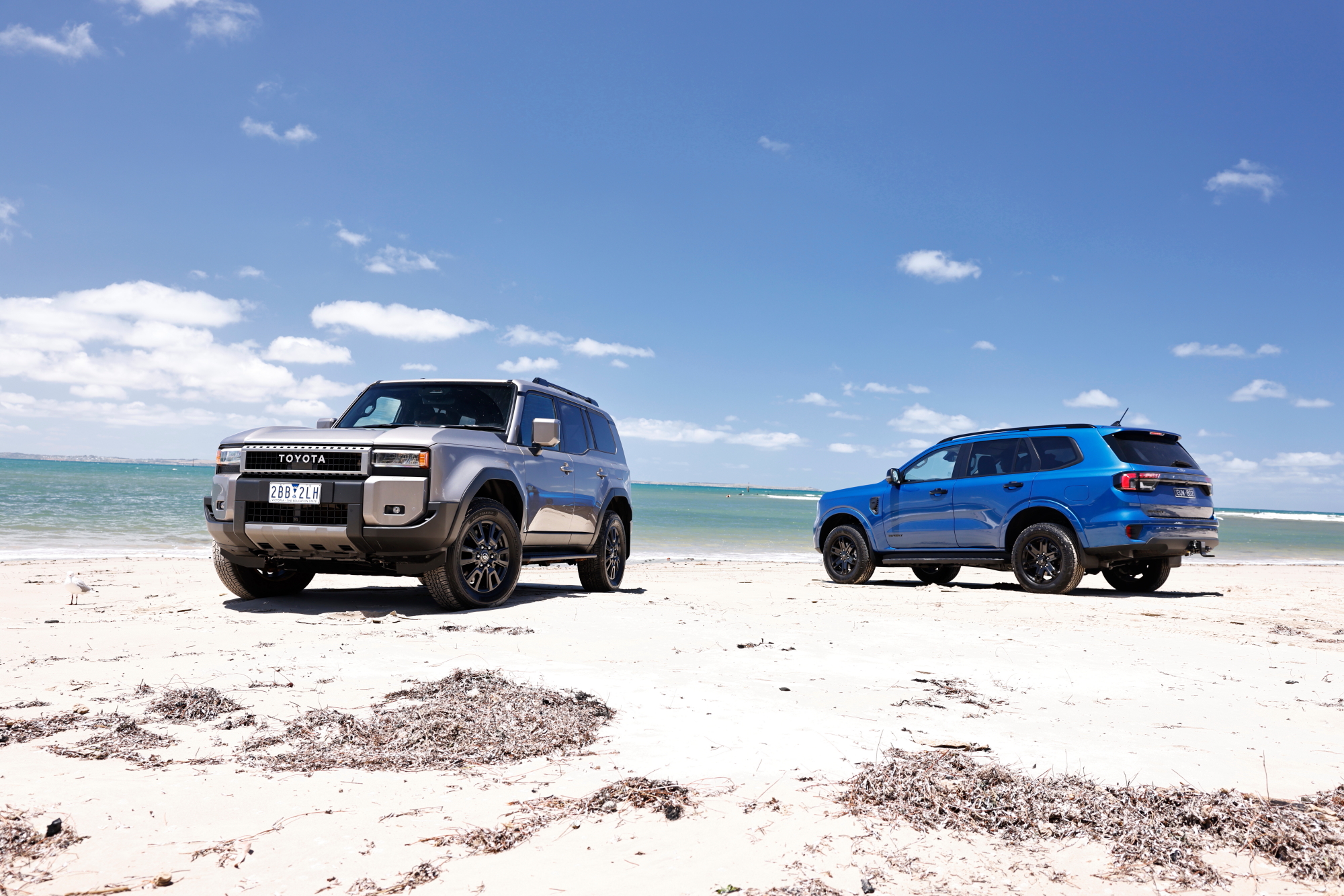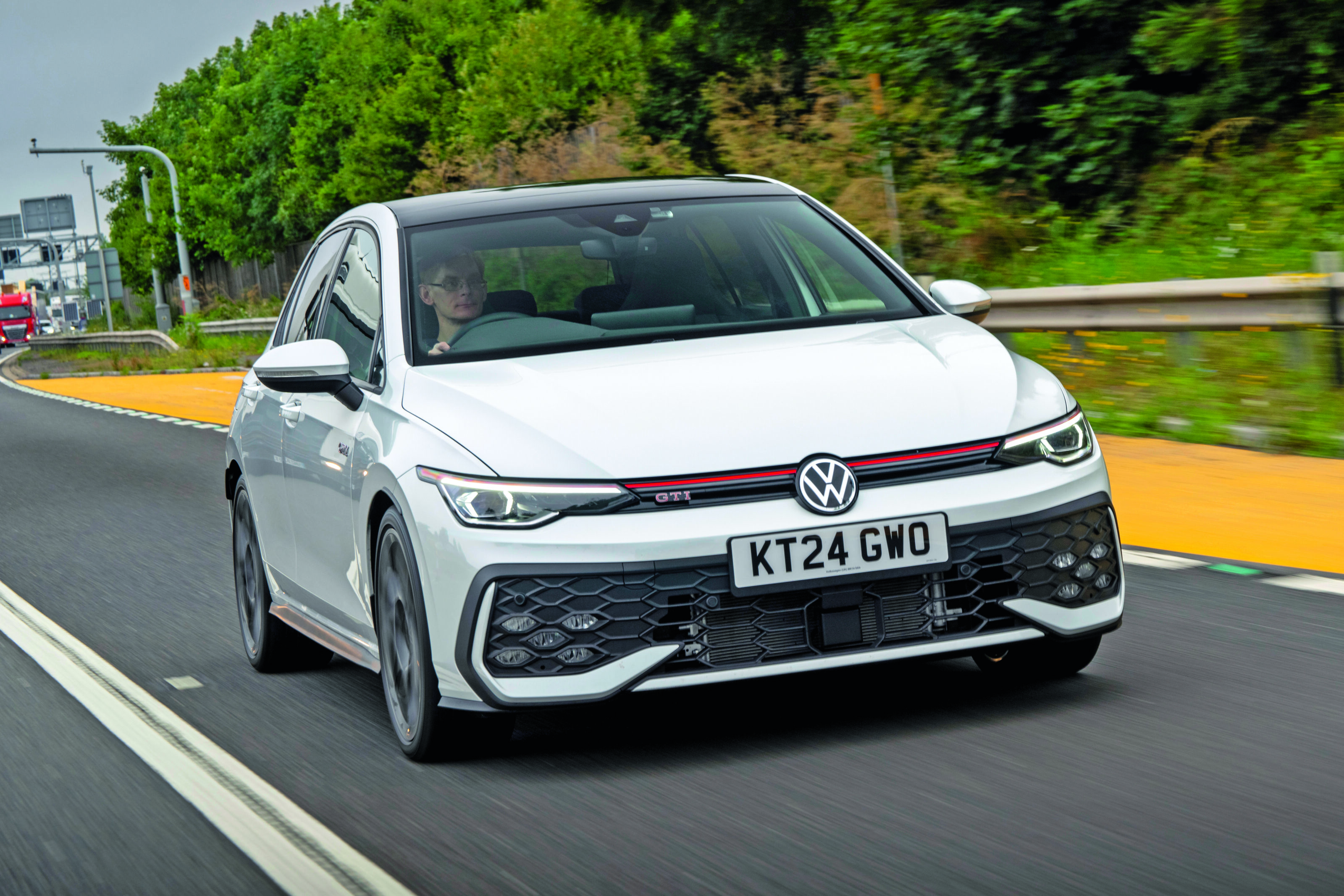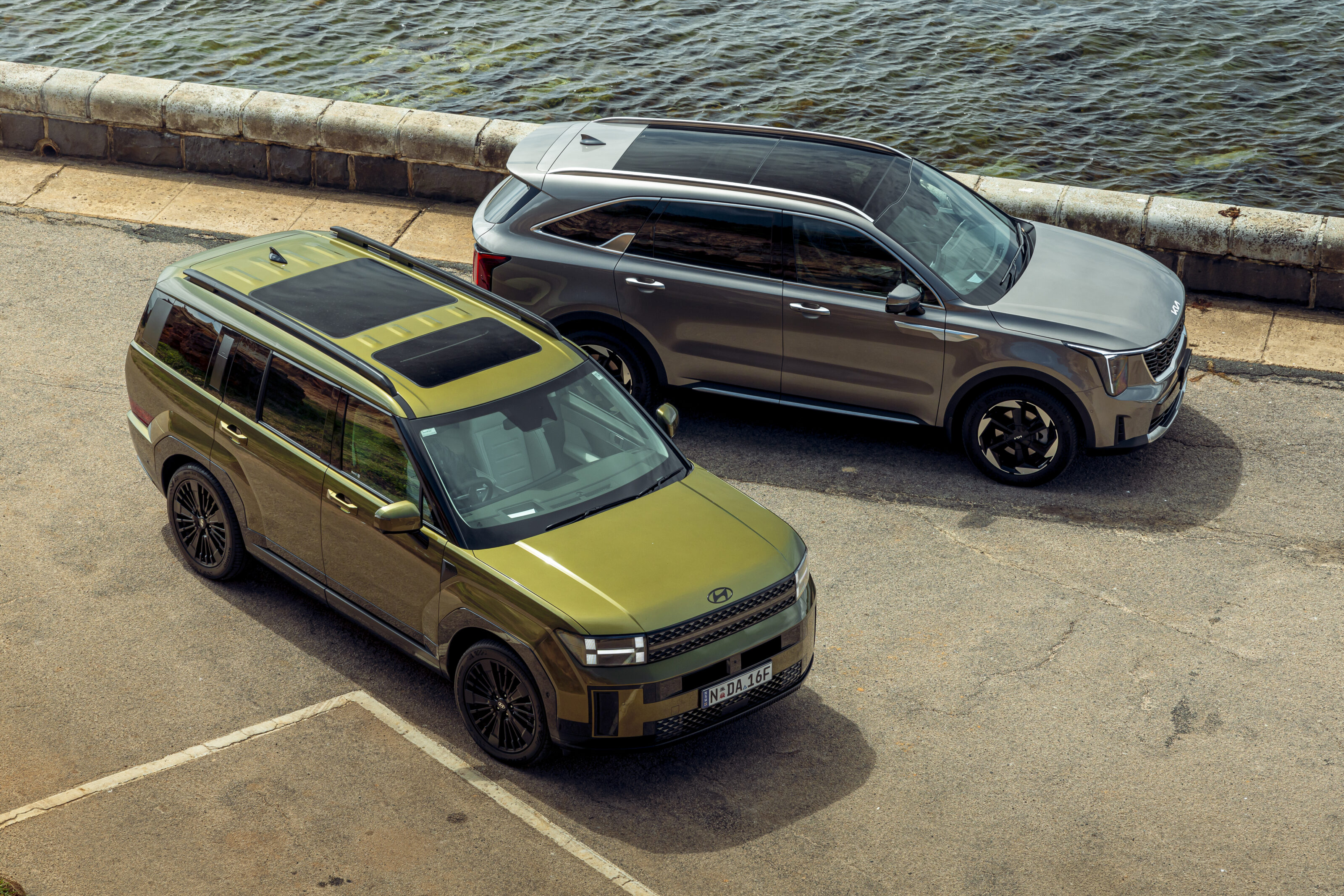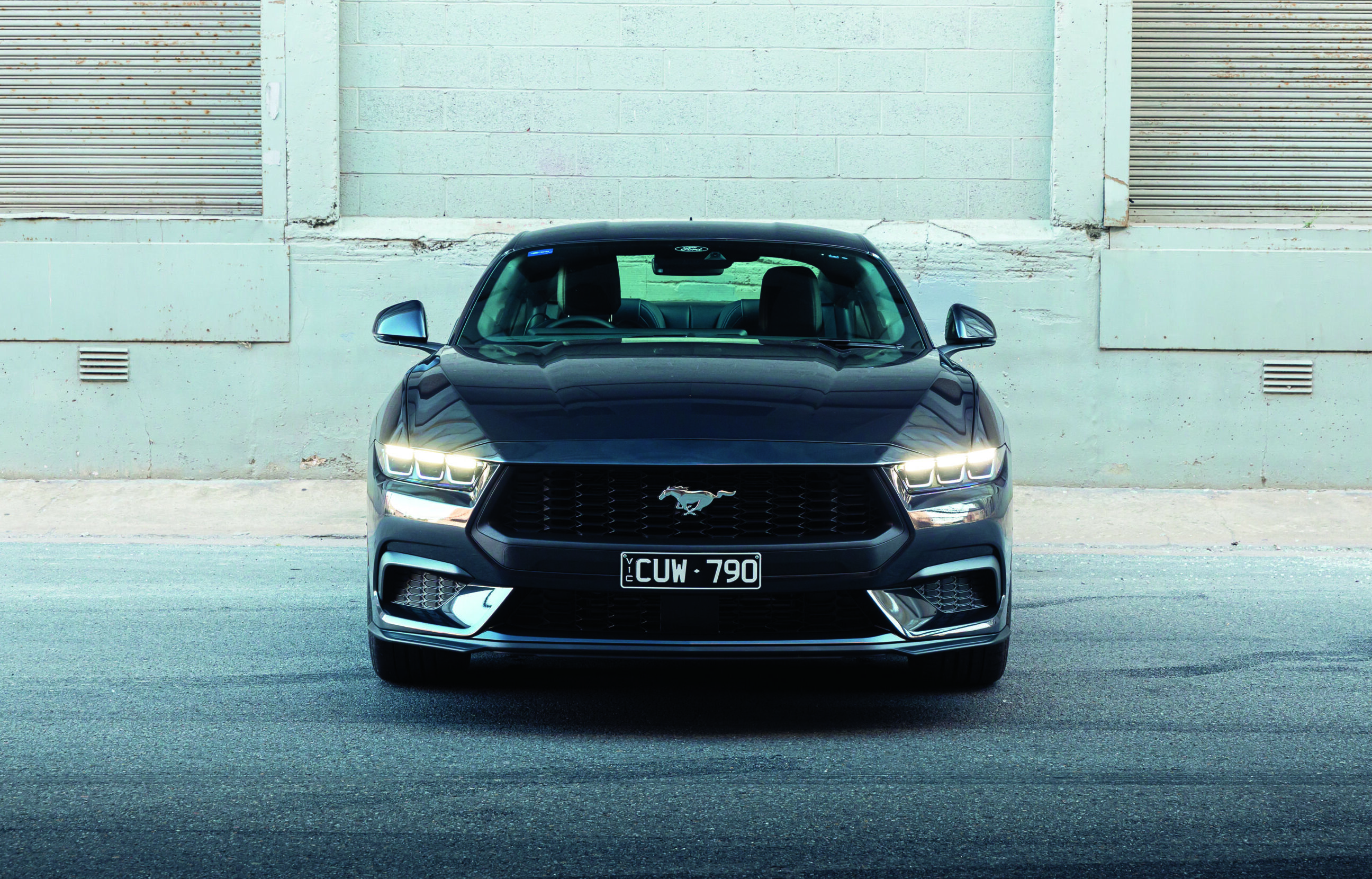Heavy is the head that wears the crown. The Ford Everest saw off all comers to win 2023’s Wheels Car of the Year crown and has been rewarded with some truly impressive sales figures. When you’re at the top, everybody’s drawing a bead on you, and there will be some who felt that Ford’s win was somehow asterisked by the fact that the ancient Toyota Prado was on run-out, ahead of an all-new model appearing.
It’s time to find out whether they have a point, because the LandCruiser Prado has finally landed and we’ve put the biggest selling Everest model, the V6 Sport, up against the Prado GXL, the variant that Toyota reckons will account for just over half of all Australian registrations.
The Ford offers an instant and useful price advantage, carrying a $73,740 price tag while the Toyota is $79,990, ducking just under this year’s Luxury Car Tax threshold of $80,567. Both are seven-seaters and the Everest scores another on-paper advantage in offering a 184kW/600Nm V6 powerplant compared to the Prado’s 150kW/500Nm four-pot. Suddenly that weight of responsibility borne by the Ford looks to have been quickly and rather effortlessly handballed to Toyota.
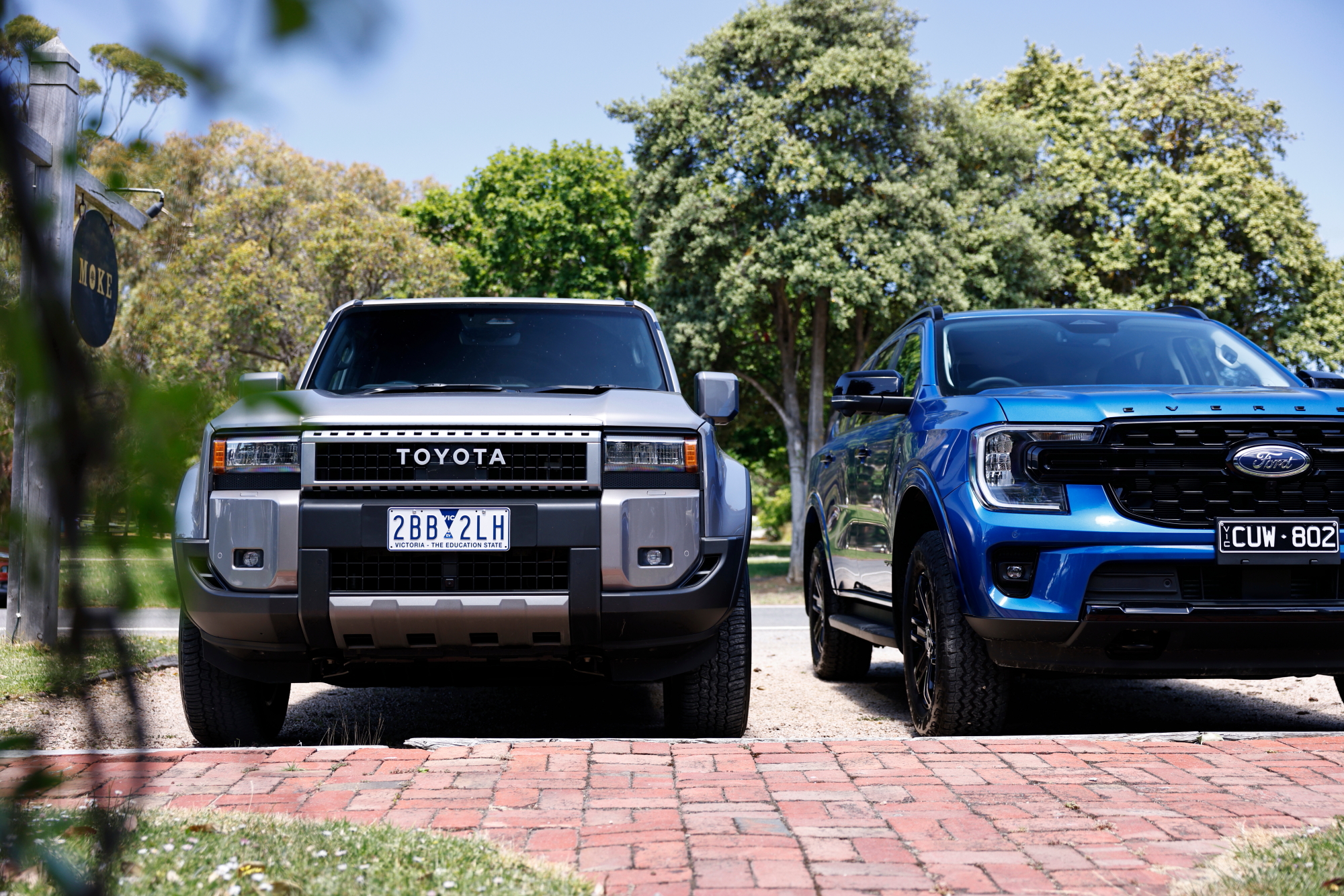
There’s little doubt that the Prado is turning more heads. As it stands, it’s still a relative novelty on our roads compared to the ubiquitous Everest, and people are endlessly curious about it, wanting to see inside, asking our opinion and giving theirs. For the most part the impression it creates is favourable. The somewhat brutalist styling is a hit, although some had asked when the retro-style round headlights that the American market gets will appear Down Under. Unfortunately, Toyota has no plans for that.
Given the pace that the order bank is filling, we’re going to get very used to the look of the Prado very soon. Toyota has instigated a rolling cap on waitlists of over 12 months, so if the queue blows out any longer than that, they won’t officially take an order from prospective customers.
There’s no great issue with Everest availability. Stock levels of the Thai-built Ford are good, with all but the range-topping Platinum versions readily available and a typical wait of three months for a Sport custom-spec order.

The GXL is the entry-level seven-seater in the Prado line-up. Beneath it is the five-seat GX base model and above it the seven-seat VX and Kakadu models, and the five-seat Altitude off-road specialist model. As well as the 50:50 split-fold third-row seating, the GXL adds standard roof rails, a powered tailgate, rear privacy glass, and silver front and rear guard trim. Inside, there’s synthetic leather seats rather than fabric upholstery, heated and ventilated front seats with eight-way powered driver’s seat, leather-trimmed steering wheel and shift knob, rear-seat air-conditioning panel and an auto-dimming rear view mirror. There’s also a front wireless charging pad and a pair of additional USB-C ports in
the third row.
The Everest range bifurcates quite neatly into the 2.0-litre four-cylinder models and the four-wheel drive V6s, of which this Sport is the entry level. It’s easy to see why it’s so popular as the 2.0-litre Trend 4WD costs a mere $6000 less, and for that, buyers are not only getting a significant engine upgrade but also a trim level that brings with it a distinct look and feel, as well as more gear.

The black exterior theme extends to 20-inch black alloys (or 18s with A/T tyres), black exterior accents and black 3D bonnet lettering. The Sport also nets a 10-speaker sound system, leather-embossed seats, 10-way power driver seat with memory function, eight-way powered passenger seat, and heating and ventilation for both front seats.
Both SUVs feature standard wireless Apple CarPlay and Android Auto, with wireless charging pads to back up that capability. Both feature large touchscreen displays, with the Ford’s easier to navigate. That said, Ford’s SYNC4A system can occasionally hang and require a reboot in order to recognise a previously paired phone. By contrast, the Prado’s system seemed rock solid in picking up smartphone mirroring quickly and effectively.
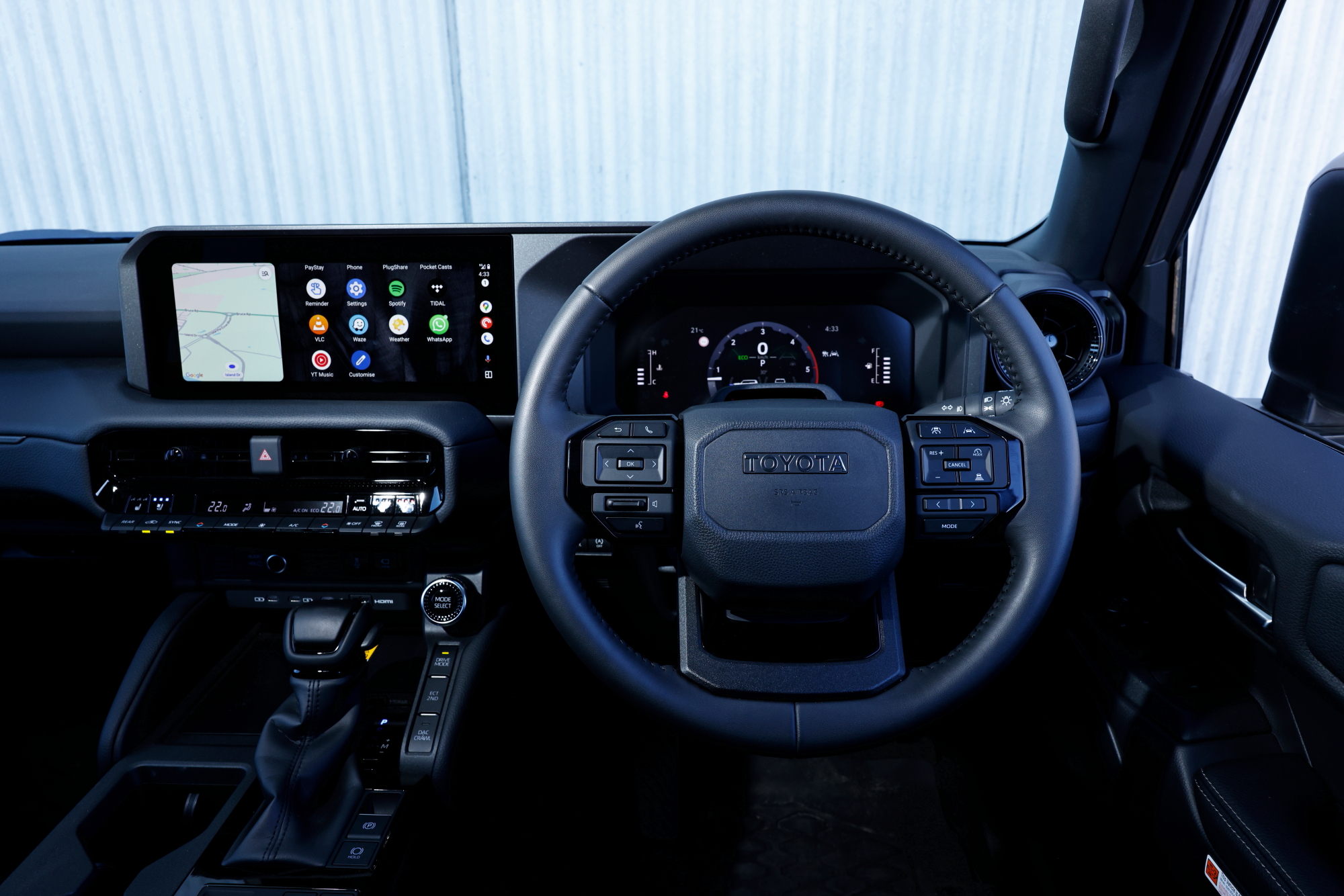
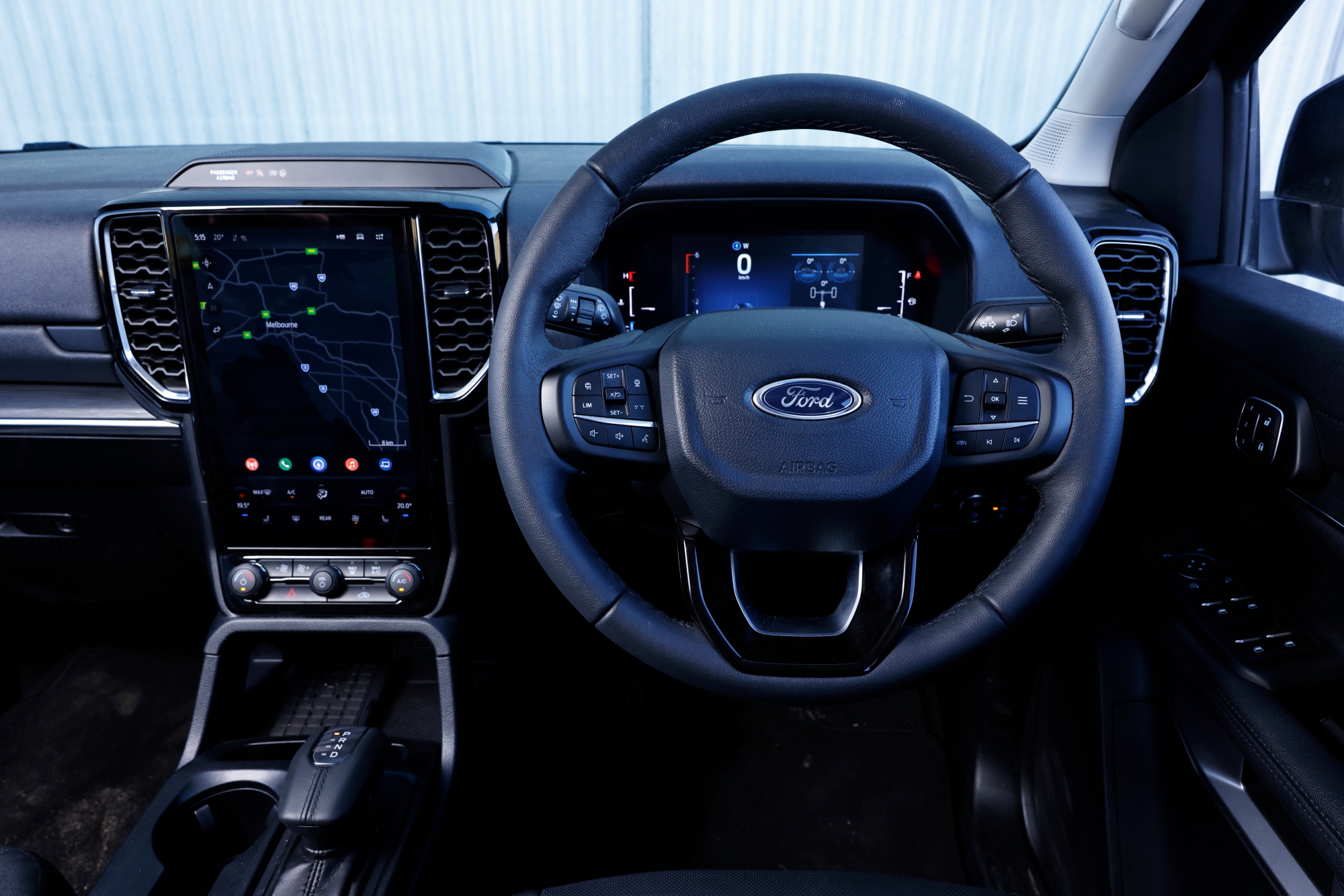
Both feel well provisioned for storage space in the front of the cabin, the Toyota featuring a larger and deeper central bin, the Everest countering with not one but two gloveboxes. The Toyota features an HDMI port and three USB slots up front, the Ford offers a choice between USB-A and USB-C. Both offer a decent driving position but, in contrast to their respective screen orientations, the Toyota’s ‘portrait’ mirrors don’t clear blind spots as effectively as the Ford’s ‘landscape’ oriented items.
Fire up the cars and the Toyota is initially more endearing. The front seats are more comfortable than the Ford’s firmish and slightly convex-feeling backrest, and the combination of low-effort steering and a softish suspension tune means that it’s a vehicle that would be easy to cover some serious kilometres in.
The engine is undoubtedly more sibilant. Despite the fitment of chain-driven harmonic balancer shafts to the 1GD unit, it’s always going to be tough making a combination of compression ignition and big 689cc cylinders feel silky. By way of comparison, the Ford’s V6 only has to manage 499cc of swept capacity per cylinder. The Prado’s lump does maintain its peak torque figure for longer than the Everest’s somewhat peakier performance.
A key part of the Toyota’s friendliness on road is the fitment of Dunlop Grandtrek AT30 tyres (265/65R18 all round). Although labelled an all-terrain tyre, they’re markedly less aggressively knobbly than the Everest’s Goodyear Wrangler Territory A/T rubber (255/65R18 front and rear). As a result, the Toyota turns in a little more crisply on the blacktop, and there’s less hum from the tyres on poor surfaces.
Pitch the Prado into a corner and that inherently soft suspension results in considerable body roll. It’s game, though, and well behaved even when pushed. As is the case with many fairly soft vehicles, it’s not so much the case of measuring over or understeer, more an issue of how much roll the vehicle is happy to accept. In the case of the Prado, it’s quite a lot.
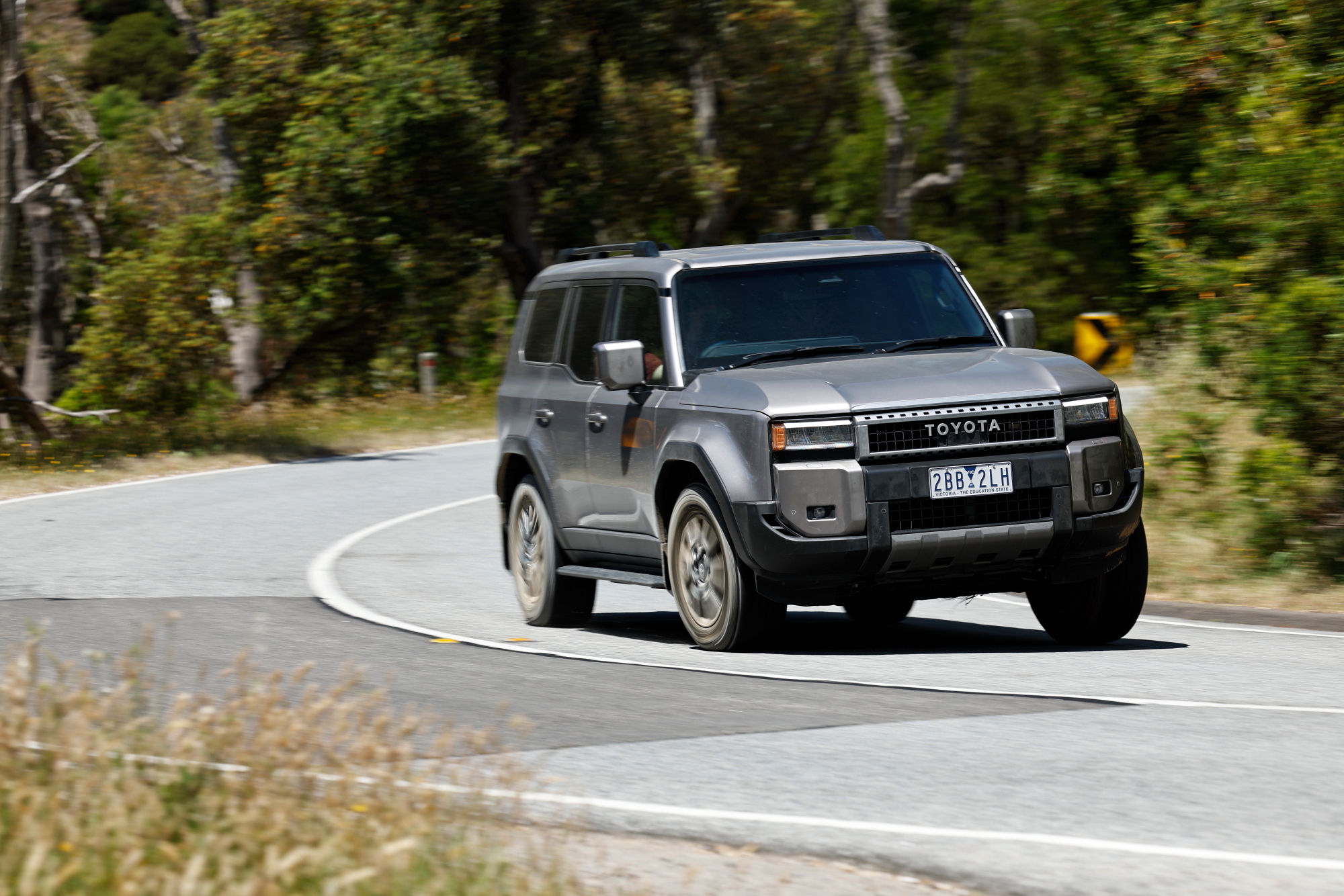
Follow the Toyota through a series of bends in the Everest and you’ll experience a far flatter and better-controlled body, albeit with rear dampers that are both a little too firm and a little too short in travel than might be ideal. The steering doesn’t feel quite as linear as that of the Toyota, but it’s quicker and delivers more feedback. For a big ’un on a warty tyre, the Ford is also surprisingly good fun to hustle along.
The engine advantage speaks for itself in a straight line, the Ford effortlessly gapping the Toyota as we pulled onto a freeway slip road. We recorded a 9.8-second 0-100km/h time for the Everest at COTY 2023, and the Prado is nearly a second off that mark, stopping the clocks at 10.7sec (according to Toyota), the modest torque fill of the 48V mild-hybrid system notwithstanding. The hybrid does help to tickle the Prado’s fuel figures into a net positive over the Everest, 8.5L/100km for the Ford playing 7.6L/100km for the Toyota. Both engines require a periodic AdBlue top up.
There’s little to choose between the two transmissions. While Ford initially had some issues with the earliest batches of 10-speed autos, a revised torque-converter design has fixed that. If anything, it’s the less hesitant of the two ’boxes now, especially around town speeds, and responds to kickdown requests quicker. Neither feature wheel-mounted shift paddles, but you can knock the Prado’s gear lever to one side and shift manually if required. The Everest features some less intuitive buttons on the shift knob to achieve the same end.
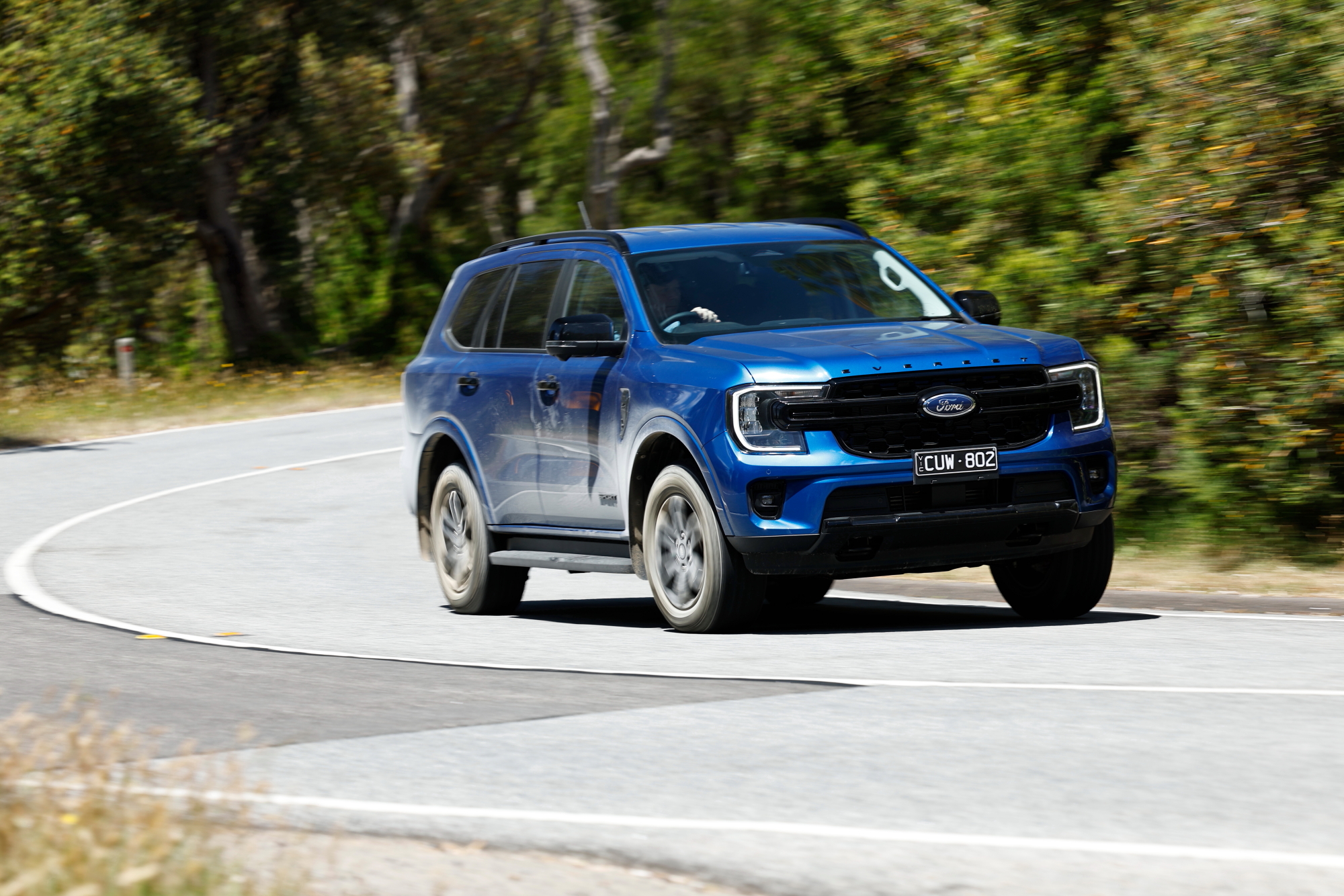
So the Prado scores wins for comfort and ride, the Everest countering with more involving handling and a superior drivetrain. Both can more than hold their own off road, as you might expect given their targeting. The Everest has 226mm of ground clearance, a wading depth of 800mm, and approach, departure and breakover angles of 30.2, 25 and 21.9 degrees respectively. It also features an electronic rear diff lock and Slippery, Mud/Ruts and Sand drive modes, as well as a dedicated off-road screen to show pitch and roll angles, steering angles and relevant camera images.
The Prado GXL’s limiting factor is its relatively urbane tyres, which have nothing like the tenacity of the Everest’s Goodyears in the soft stuff. Nevertheless, it features 219mm of ground clearance, a 700mm wading depth and approach, departure and breakover angles of 30.4, 23.5 and 21.1 degrees, so largely a notch behind the Everest. It also doesn’t come equipped with the trick demountable sway bars of the Altitude variant, so can’t boast that model’s ultimate articulation.
It does feature a rock crawl setting, a mode to start in 2nd gear, and a centre Torsen diff lock. Prado owners get a choice of either four-wheel drive high or the equivalent low range, whereas Everest can be run in rear drive – a smart four-wheel drive that diverts drive to the front treads when necessary – and the obligatory 4H and 4L settings. We found it hard to switch out the parking sensors when off-roading, resulting in many maddening bleeps, as it’s a function buried within the on-screen menus rather than operated by a physical button.
Somewhat unforgivably for two vehicles with an off-road remit, neither have a standard tyre-pressure monitoring system. In both cases you need to ascend the range to get this system as standard (VX in the case of the Prado, Platinum on Everest).
Both vehicles claim a 3500kg braked towing capability, but delve a little deeper into this one and key differences emerge. You might well have heard grumbles about the Prado’s payload, and the GXL has the highest payload of the range at 615kg. The sum total of towball down load, fuel, driver and passenger, roof racks, luggage, bullbars and such like need to be accommodated within that 615kg figure. Perhaps this helps explain why the Prado wasn’t offered as stock with a long range fuel tank option or space under the bonnet for a second battery. The Everest’s payload figure is quoted at 696kg.
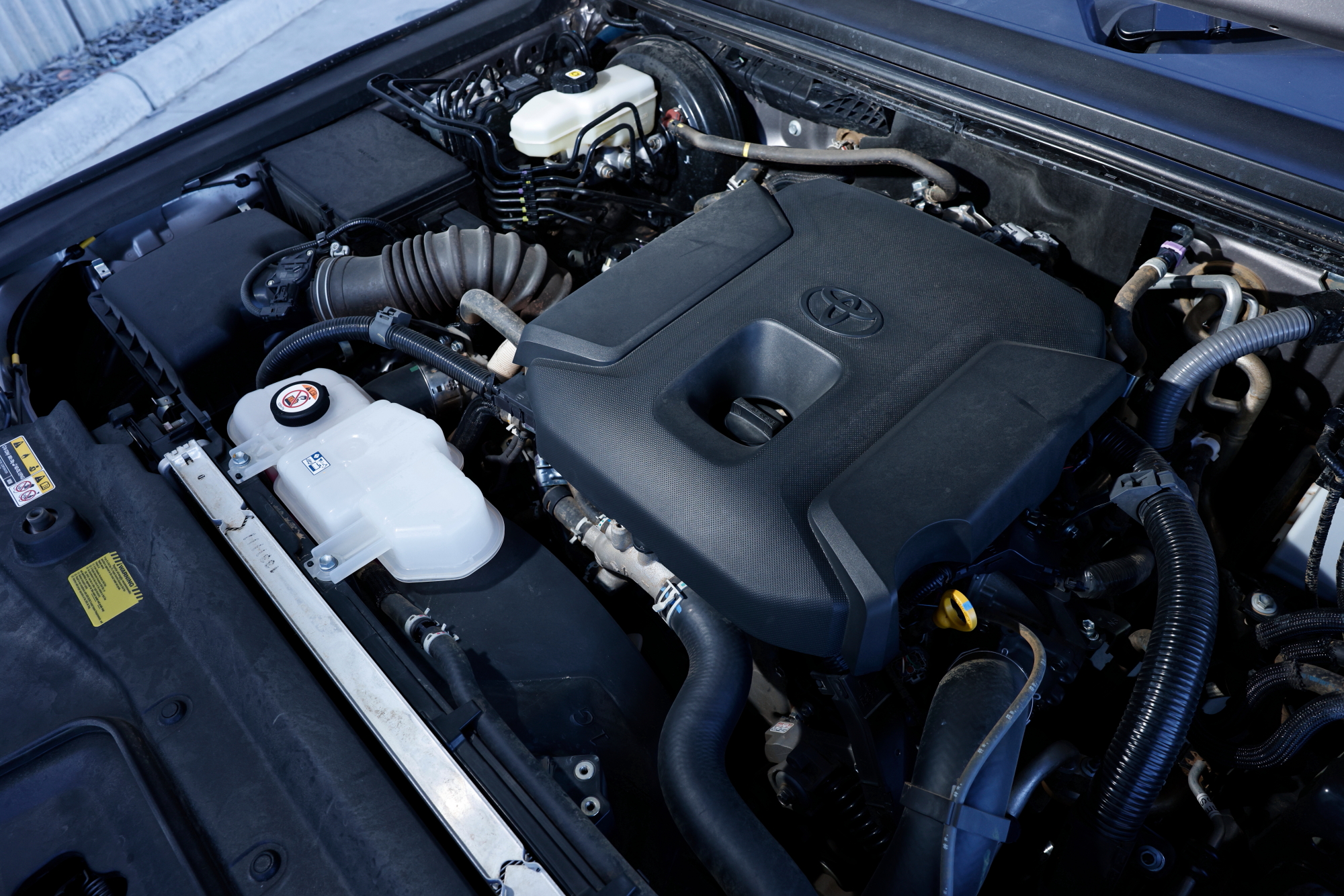
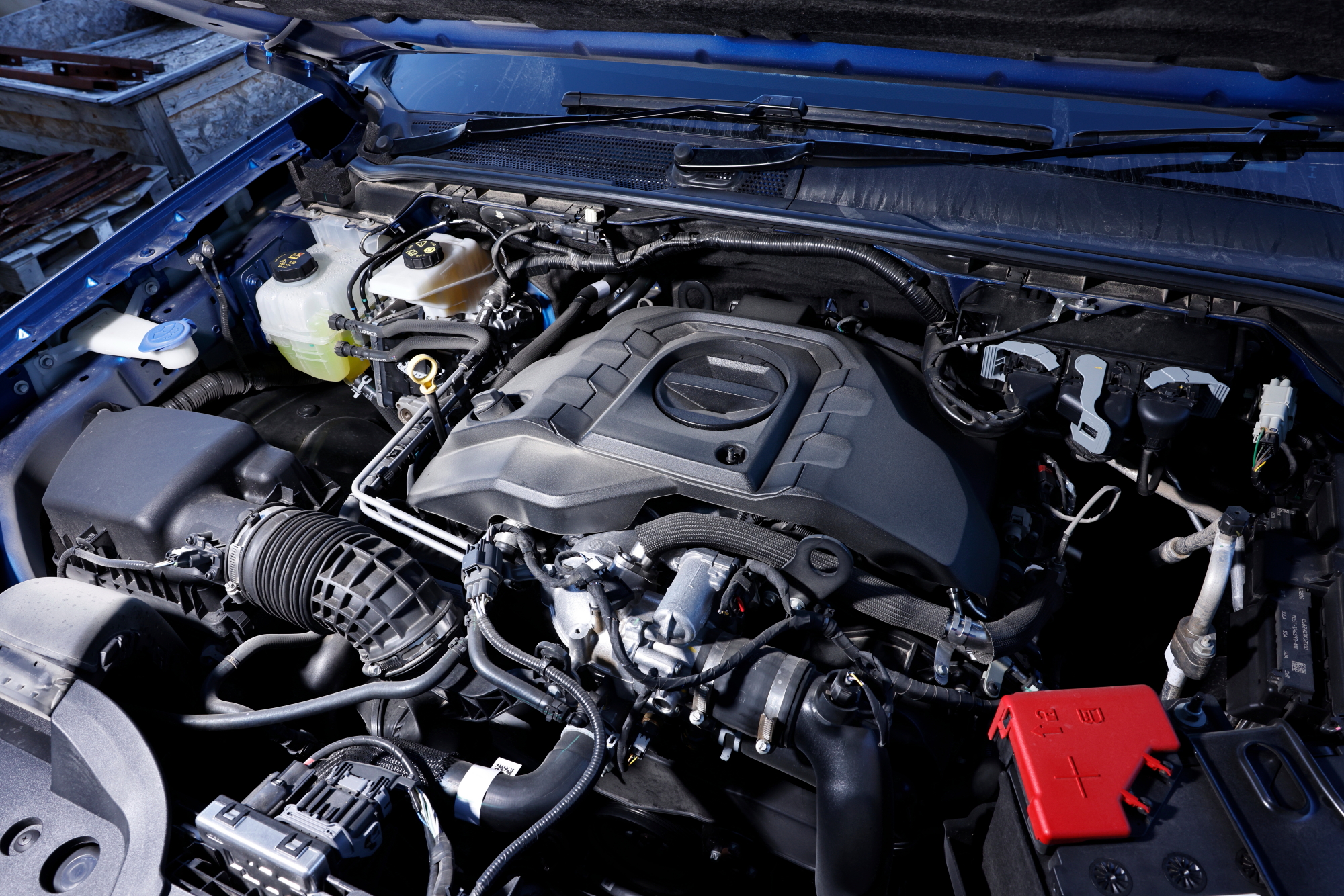
Luggage and packaging in general are an issue with this seven-seat Prado. Whereas the rearmost row of seats in the Everest folds flat to the floor to create a huge, low 128cm long runway on which to load gear, the Prado’s clunky rear seats sit atop a raised floor which houses the 48V battery pack. So not only is the Prado’s luggage bay shorter in that dimension than the Ford’s at 115cm, it’s also less tall from the folded seat backs to the ceiling (76cm v 82cm).
Fold the third row up and the Ford offers 56cm from the base of the seat back to the tailgate’s dust seal, whereas it’s a mere 40cm in the more compromised Toyota.
Why is this? After all, the Toyota’s rear end looks longer, and indeed is, than the Ford’s. Climb into the Prado’s second row and it’s apparent that because there’s no slide facility for that bench, Toyota have given this row a very decent amount of leg and toe space, and the third row is cramped as a result, with a very awkward egress past the tumbling seat. By contrast the Everest’s second bench has a tilt/slide facility which can afford a fairer amount of space for kids in the third row.
The drop-in storage box that Toyota fits to add some token practicality at the back doesn’t give a great impression of quality – it’s unlined and the lid has a 60kg weight limit.
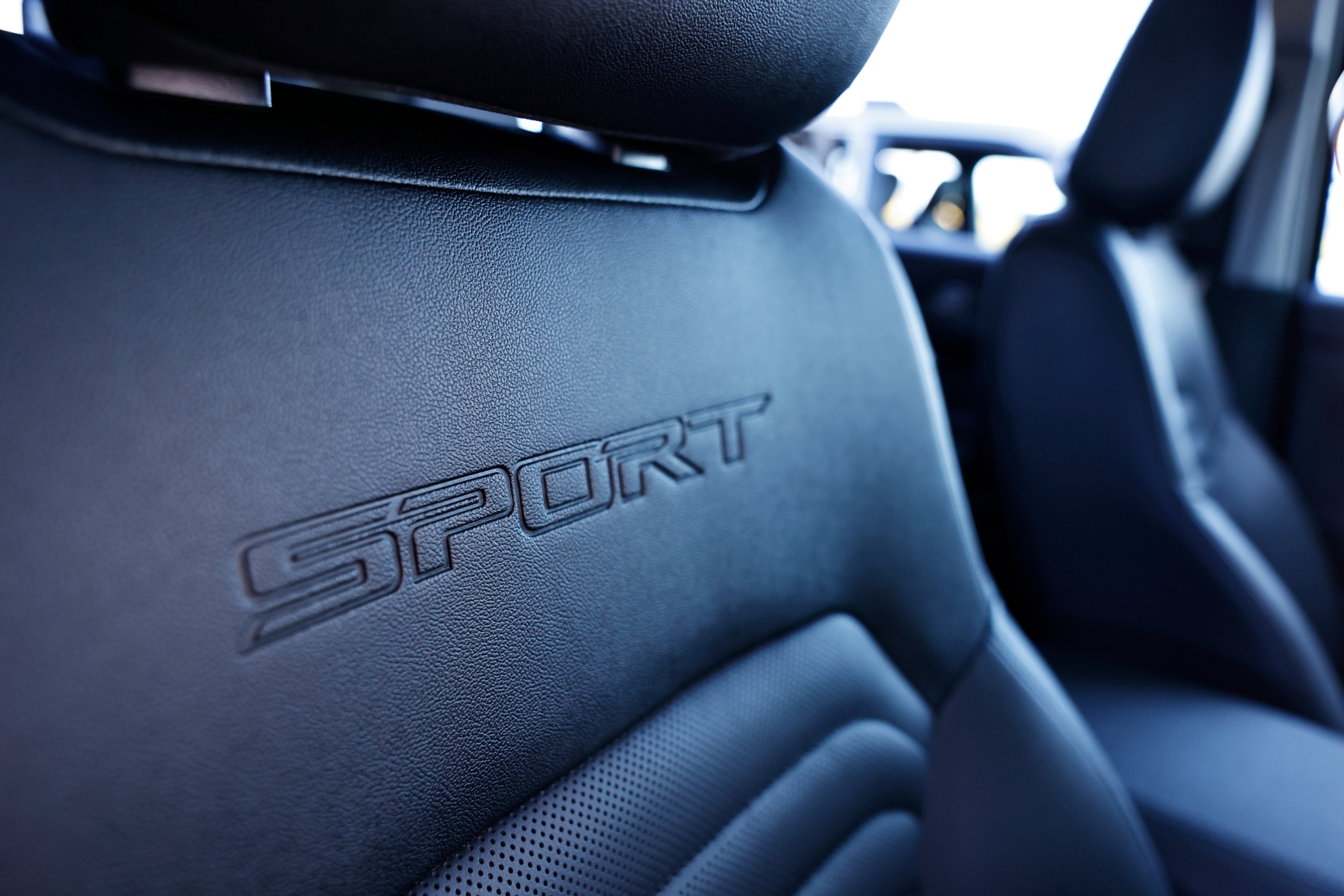
With all three rows of seats in place, Toyota claims 182 litres of storage for the GXL in seven-seat mode, 906 litres with the 50:50 split-folding third row lowered and 1829 litres if the 60:40 split second row stowed. Ford, by contrast claims 259 litres with seven seats in place, 898 with the third-row folded flat and and 1823 litres.
We flatly refuse to believe that the Prado GXL offers more space than the Everest Sport in five-seat guise, despite the quoted figures, which I suspect may be to the ceiling rather than the more normally quoted figure to the height of the parcel shelf. Toyota Australia referred our query back to Japan and we’re still waiting for a response to this particular question.
The rear end of the car is such an issue that it makes it extremely difficult to recommend over the Everest as a practical seven-seat proposition. The sheer height of the floor means that lifting baby strollers or shopping into the Toyota is so much harder than it needs to be. It’s also proving to be a sticking point that some prospective customers can’t look past. That alone would be enough to hand the Everest the win in this comparison.
That it’s also more affordable, faster, more refined, more involving to drive, just as good off road, better for towing, just as well equipped and also records a five-star safety score makes the Ford the easy recommendation in this head to head. Ultimately, the 48V mild-hybrid system seems to have been this Prado’s Achilles heel. It has compromised the rear packaging while in the process adding weight to the vehicle which, in turn, has a deleterious effect on its payload figure.
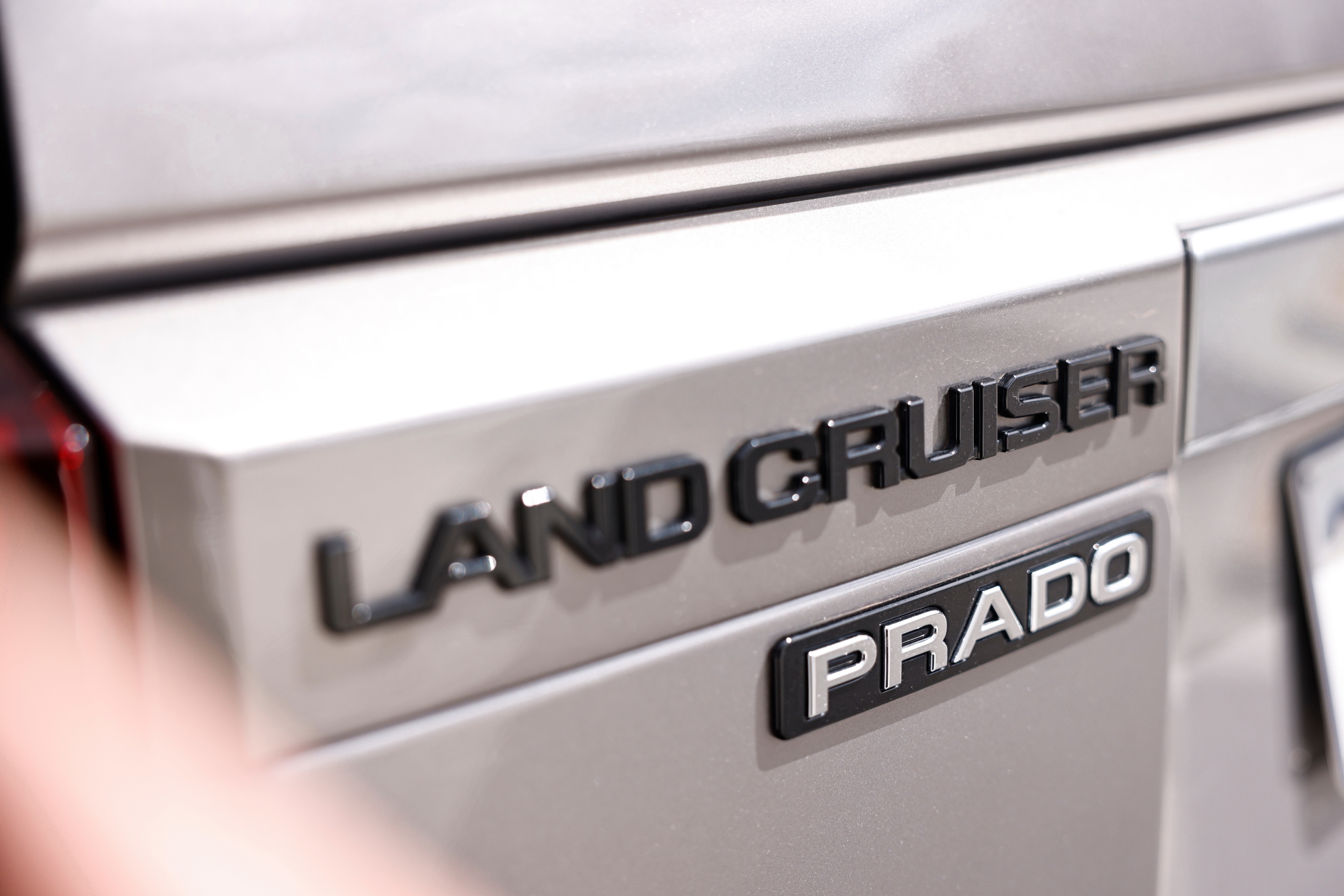
We crowned the Everest the COTY winner in 2023 because it was a car that manifestly understood what Aussies wanted from a rugged seven-seat SUV. Designed by Australians, in Australia, for Australians was the mantra that did a great deal to get it across the line last year. It still holds true today.
As for the Prado, it’s tough to make a case for it in this particular instance. Were you set on owning one for the longer haul and you didn’t particularly care about ultimate carrying or towing capacity, it’d doubtless be an appealing thing, but those inherent compromises become apparent every time you lift the tailgate.
Toyota doesn’t come to market and get squarely beaten by a three-year-old incumbent very often but in the shape of the all-conquering Everest, the latest LandCruiser Prado has run into something very special indeed.
In focus – Ford Everest
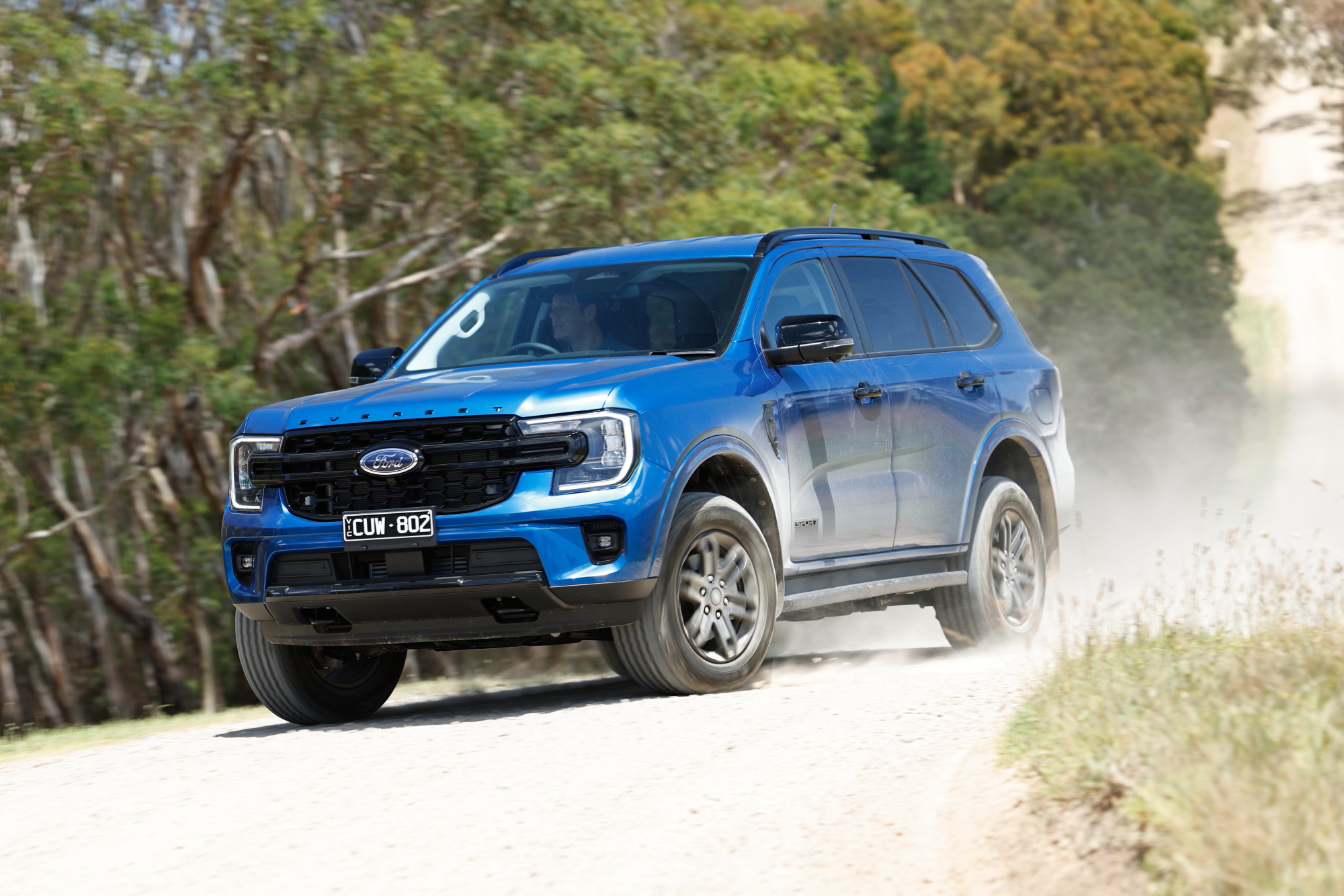
The Ford Everest’s cabin is something that’s well executed and certainly a step up from workmanlike, but it still carries the whiff of its Ranger counterpart about it. Every Everest comes as standard with an embedded modem known as FordPass Connect that allows you to use the FordPass app on your smartphone to remotely start the vehicle, receive health checks and so on.
Ford’s trailer-towing tech is deeply impressive. Input the dimensions of your trailer into the system and it’ll automatically adjust all the parameters of the lane departure system to cater for the increased length of vehicle and trailer.
The Everest’s 2900mm wheelbase is a useful 50mm longer than Prado and it shows in the cabin packaging.
| Model | Ford Everest Sport V6 4WD |
|---|---|
| Engine | 2993cc V6, dohc, 24v, turbo-diesel |
| Max power | 184kW @ 3250rpm |
| Max torque | 600Nm @ 1750-2250rpm |
| Transmission | 10-speed automatic |
| Weight | 2454kg |
| 0-100km/h | 9.8sec (tested) |
| Economy | 8.5L/100km (combined) |
| Price | $73,740 |
| On sale | Now |
In focus – Toyota Prado

There’s little doubt that the Toyota’s dash looks and feels a notch above that of the Ford’s. Some real thought has clearly gone into the size, quality and positioning of the physical buttons, Toyota clearly listening to feedback from scores of Prado customers.
The low instrument panel, upright A-pillar, higher driver hip point and low beltline improves the feeling of airiness and helps position the vehicle off-road.
Toyota’s Multi Terrain System (MTS) is largely carried over from the LC300 and it works well. Dust sealing is also markedly better than the old Prado. Seating upholstery in this GXL model is made from Sumitex fabric largely composed from recycled PET plastic bottles.
| Model | Toyota LandCruiser Prado GXL |
|---|---|
| Engine | 2755cc 4cyl, dohc, 24v, turbo-diesel |
| Max power | 150kW @ 3000-4000rpm |
| Max torque | 500Nm @ 1600-2800rpm |
| Transmission | 8-speed automatic |
| Weight | 2535kg |
| 0-100km/h | 10.7sec (claimed) |
| Economy | 7.6L/100km (combined) |
| Price | $79,990 |
| On sale | Now |
This article originally appeared in the January 2025 issue of Wheels magazine.
We recommend
-
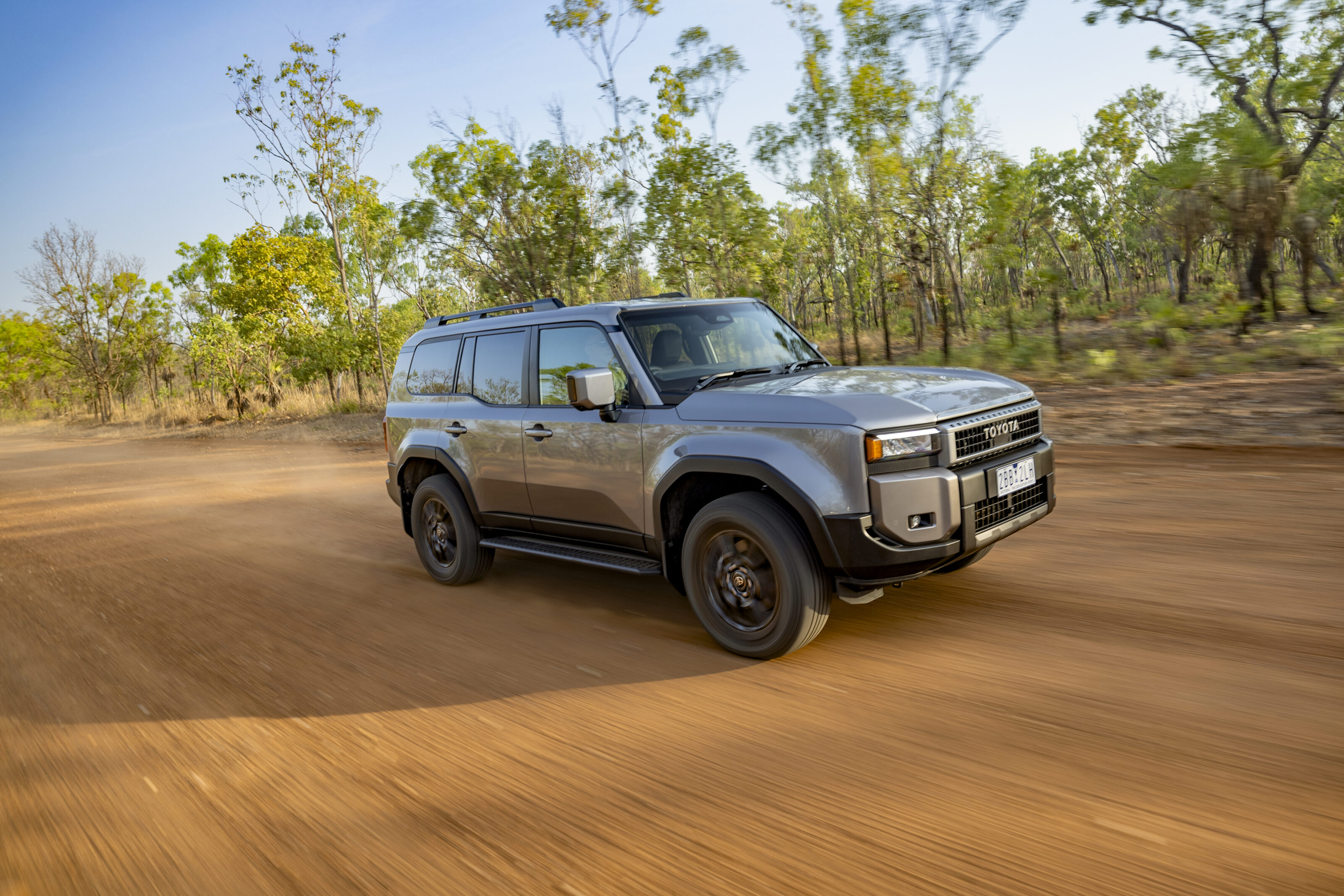 Reviews
Reviews2025 Toyota Prado GXL: Big improvements... and some compromises
It was one of the most anticipated new arrivals of 2024 and while the new Toyota LandCruiser Prado 250-Series offers some welcome new features, the interior’s design does raise some questions.
-
 COTY
COTY2023 Ford Everest: Wheels Car of the Year winner
Brilliant large SUV that’s designed for Australians by Australians snags Ford its first COTY since 2004. Here’s why.


